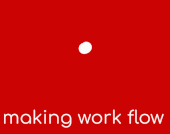Photocopiers have been an essential part of the office since the first Xerox models began appearing in the late 1960s.
Almost every office in the world now has one, and today’s multifunctional devices do everything from printing and photocopying to scanning.
Businesses often give some thought as to how and where to source their next device, but many get bogged down in browsing the features of potential machines without fully considering the fundamental question of whether to lease copiers, rent photocopiers or buy their devices out right. So which should you opt for?
The difference between leasing and buying
Most people understand the fundamental difference between leasing and buying. If you buy an item, you either pay cash up front or borrow the money to purchase it. If you lease copier and printer equipment, you take possession of the item and pay instalments to the owner in exchange for using it.
Renting and leasing are very similar arrangements, though photocopier lease agreements tend to be a little more flexible but the term may be shorter which can make the overall cost higher.
The pros and cons of buying
Buying means you own the device from day one. Purchasing a piece of equipment outright puts you in total control and you can upgrade it whenever you want.
With the reliability of today’s technology, it could mean you can own a machine for several years without making lease copier or printer payments. You don’t pay interest charges or fees during the lifetime of the machine and you don’t have to give it back to the owner at the end of the lease period. You should always remember though that toner and maintenance costs need to be added on.
In today’s workplace, a photocopier does much more than just copy. Your device will perform multiple document management tasks and in the paperless office, your multifunctional device becomes a powerful tool with features like email and scanning. That is likely to mean most businesses require a relatively high-end piece of equipment and the upfront cost can be prohibitive.
With the rate that technology changes, most copiers require upgrading every 2 to 3 years to keep up to date, and with devices becoming ever more energy efficient, costs continue to fall as technology advances. That means the copier you’ve purchased could be costing you more than it should.
The benefits and drawbacks of leasing
Some people are naturally averse to leasing equipment, often because they haven’t fully considered the benefits, but there are some drawbacks to sourcing your photocopier this way.
Some owners like to operate their business without owing money. Whilst leasing isn’t technically a debt, you will be bound to the terms of the lease and some people consider an agreement of this sort similar to operating with a debt.
It’s also true that some firms probably shouldn’t lease copiers and printers. For a new or existing business worried about long-term survival, leasing may not be wise as you’ll be tied into a contract which is often difficult to get out of. And if you make very few copies, say less than 500 a month, it’s probably not viable to lease a copier.
Back in the 1980s, the number of companies buying, or leasing devices was probably around 50 / 50, but today more than 80 percent of business lease their copiers, so why the change?
With a lease copier or printer, you can simply budget a relatively small amount for the copier and upgrade it every few years as technology progresses.
By choosing an agreement with a pre-determined upgrade date, you know your office will always have the most advanced device.
There’s little upfront cost and you can take delivery almost immediately. Leasing helps with cash flow and capital outlay, and finance leases are treated as a fixed asset. Service agreements can be easily taken out and alleviate the worry of call-out charges and replacement parts.
When you lease a copier, payments are considered a pre-tax expense meaning you can deduct the payment from your taxes. If you buy a device, you can only deduct its depreciation and copiers depreciate by around 40% in the first year and 25% in the second.
What to look for in your lease
Lease copier terms generally run from 12 months up to 60 months, but 36 months is a typical agreement length and makes sense for most organisations.
It’s always advisable to work out your copy volume before approaching a lease provider. The price you pay will typically be linked to usage. Lease copier contracts tend to vary from 5,000 pages to 50,000 pages
You’ll also need to decide what features you need such as duplex printing and automatic document feeding. Finishing is also important, so consider whether you want a stapling and hole-punching feature. Most offices will also need their device to be able to scan, and send fax and email versions of documents.
The beauty of leasing is its flexibility and you can tailor the terms and features of your agreement precisely to your budget and operational needs.

